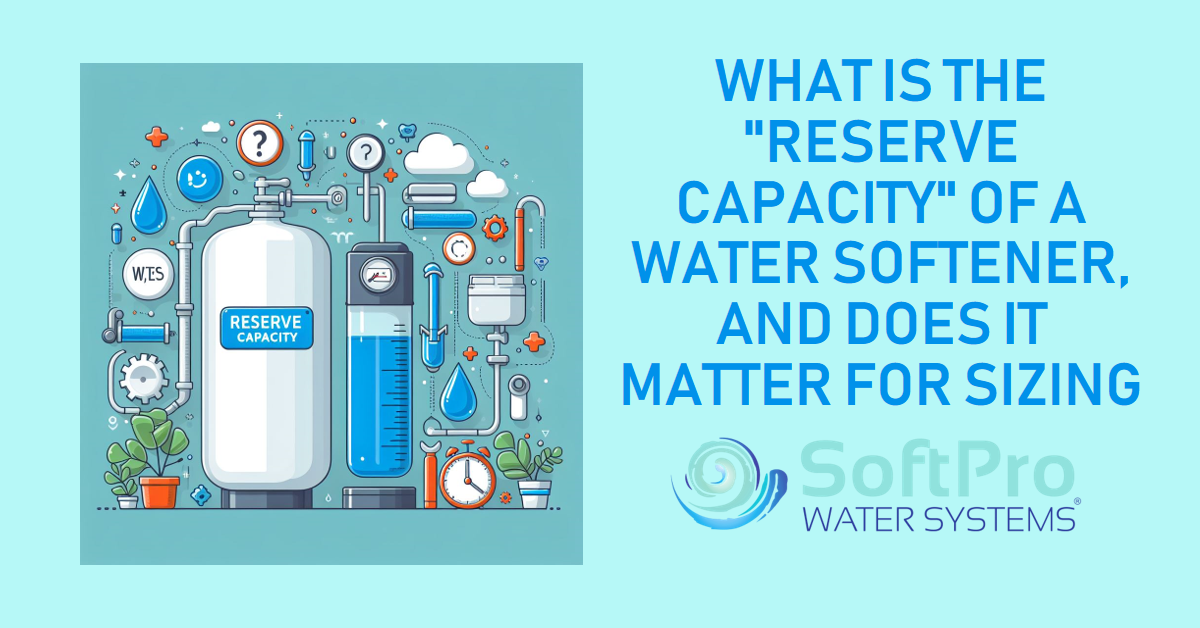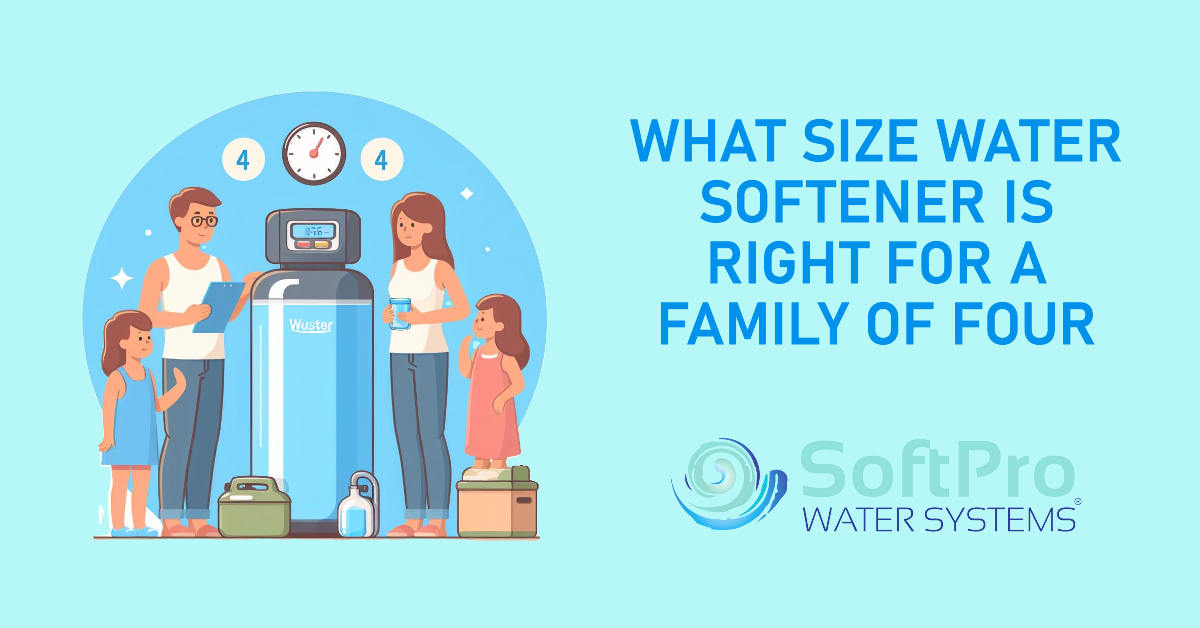What is the Reserve Capacity of a Water Softener and Does it Matter for Sizing?
Table of Contents
A water softener's reserve capacity indicates the amount of hard water it can effectively treat before requiring regeneration. Regeneration is the process where the softener's resin beads, responsible for removing hardness minerals, are cleansed and recharged. Choosing the right-sized water softener is essential, and reserve capacity plays a vital role in this decision.
Understanding Reserve Capacity
Reserve capacity is typically expressed as a percentage of a softener's total grain capacity (the total amount of hardness minerals it can remove). A 25% reserve is generally recommended. For example, a 32,000-grain softener would have a working capacity of 24,000 grains before regeneration. The required reserve capacity depends on factors such as your water's hardness level and the daily water usage in your household.
Reserve Capacity and Softener Efficiency
Maintaining an optimal reserve capacity is crucial for several reasons:
- Prevents Hard Water Breakthrough: An adequate reserve capacity helps avoid situations where you run out of softened water, especially during periods of high demand.
- Optimizes Salt and Water Usage: Water softeners that regenerate based on actual water usage patterns (rather than set time intervals) tend to be more efficient, using less salt and water.
- Extends Resin Lifespan: Less frequent regenerations put less strain on the resin beads inside the softener, extending their lifespan.
Choosing the Right-Sized Water Softener: The Importance of Reserve Capacity
Here's a step-by-step guide to determine the appropriate water softener size for your home, with an emphasis on reserve capacity:
- Determine Water Hardness: Have your water tested to find out the grains per gallon (GPG) of hardness.
- Estimate Daily Water Usage: A general guideline is 75 gallons of water per person, per day in your household.
-
Calculate Needed Softening Capacity:
- Multiply your daily water usage by the water hardness (GPG) and the desired number of days between regenerations.
- Example: 225 gallons/day (3 people) x 15 GPG hardness x 4 days between regenerations = 13,500 grains.
- Apply Reserve Capacity: To ensure continuous soft water, add your desired reserve capacity (25%). 13,500 grains x 1.25 = 16,875 grains
- Choose Your Softener: Select a softener with a total grain capacity closest to or slightly exceeding your calculated requirement (16,875 grains in this example).
Real-World Consequences of Incorrect Sizing
- Undersized Softeners: Frequent hard water breakthrough, potential for mineral buildup on fixtures, and increased wear and tear due to overly frequent regenerations.
- Oversized Softeners: Inefficient salt usage, potential channeling issues within the resin bed (reducing effectiveness), and possibly higher upfront costs.
Advanced Features and Reserve Capacity
- Demand-Initiated Regeneration (DIR): DIR systems monitor water usage and trigger regeneration only when necessary, maximizing reserve capacity and optimizing salt and water efficiency.
- Dual-Tank Systems: These systems use alternating tanks, ensuring a continuous supply of softened water even during regeneration and potentially improving reserve capacity management.
Summary and Key Takeaways
Choosing the right water softener isn't just about grain capacity. Reserve capacity plays a pivotal role in ensuring you enjoy the full benefits of softened water without compromising efficiency or longevity. By understanding reserve capacity, accurately calculating your softening needs, and considering features like demand-initiated regeneration, you'll find the perfect system for your household.
Key Takeaways
| Concept | Importance |
|---|---|
| Water Hardness Testing | Knowing your water's GPG hardness is the starting point |
| Regeneration Frequency | Impacts salt usage, resin lifespan, and water availability |
| Upflow Regeneration | Can improve efficiency and reduce channeling in some systems |
| Salt-Free Conditioners | Alternative technology; doesn't remove hardness, but may prevent some scale buildup |
Ready to experience the benefits of softened water?
Invest in a water hardness test kit today and start the journey to finding the ideal water softener for your home.




![SoftPro Chlorine+ Carbon Whole House Water Filter to Remove PFAS, Chlorine, Chloramine & Pesticides [City Water Filters Series]](http://www.softprowatersystems.com/cdn/shop/products/softpro-whole-house-chlorine-filter-282008.jpg?v=1758858973&width=140)
![SoftPro Iron Filter - Iron Master AIO - Best Iron Filter for Well Water [Air Injected Water Filter / Katalox]](http://www.softprowatersystems.com/cdn/shop/products/softpro-iron-master-aio-water-filtration-system-remove-iron-sulfur-manganese-using-air-injection-for-optimal-performance-412868.jpg?v=1758859831&width=140)













